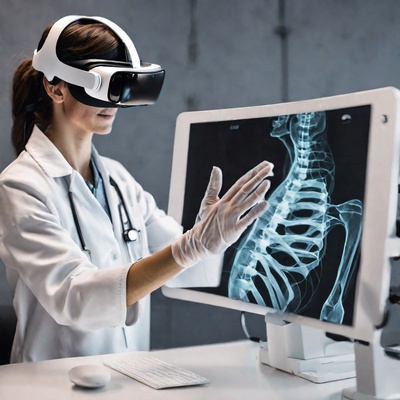Improving Radiology Diagnostics Training with XR
Millions of chest X-rays are taken annually, highlighting their importance in diagnosing various health conditions.However, the global shortage of radiologists cannot meet the growing demand, straining healthcare systems. Machine Learning (ML) can improve radiologists workflow efficiency and diagnosis quality. Despite advancements in AI and DL, their opaque mechanisms raise concerns about biases and misdiagnoses.To mitigate these concerns, there is a pressing need to develop interactive, explainable models that provide radiologists with clear and understandable explanations. The
XAVIER Project (eXplainable Artificial intelligence and VIrtual reality for Enhanced Radiology) aims to bridge this gap by offering human comprehensible insights into AI predictions, thereby fostering trust and facilitating the adoption of AI based solutions in clinical practice. XR (Extended Reality) technologies (combination of VR,AR and MR) in radiology offer promising 3D visualization and interactive experiences, but their impact on diagnostic accuracy, efficiency, decision-making, and training effectiveness is under explored. This research project investigates XR's effectiveness in radiology practice and education.Integrating XR with AI-driven tools like XAVIER helps radiologists understand and trust insights, improving decision-making and training, alleviating workload, and leading to better patient outcomes and resilient healthcare systems.

People
Collaborators
Publications

